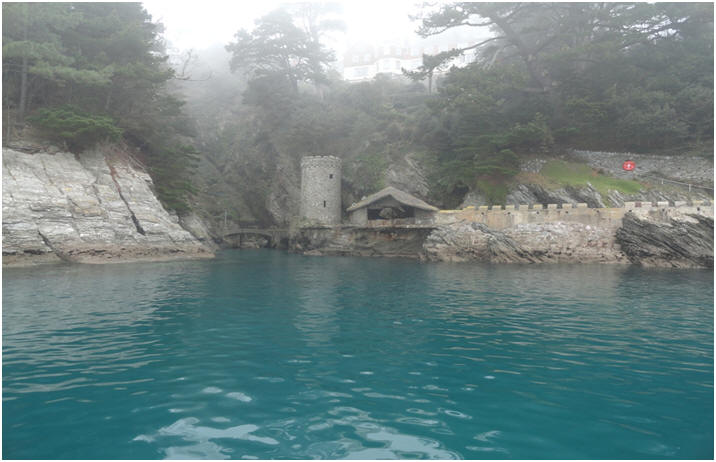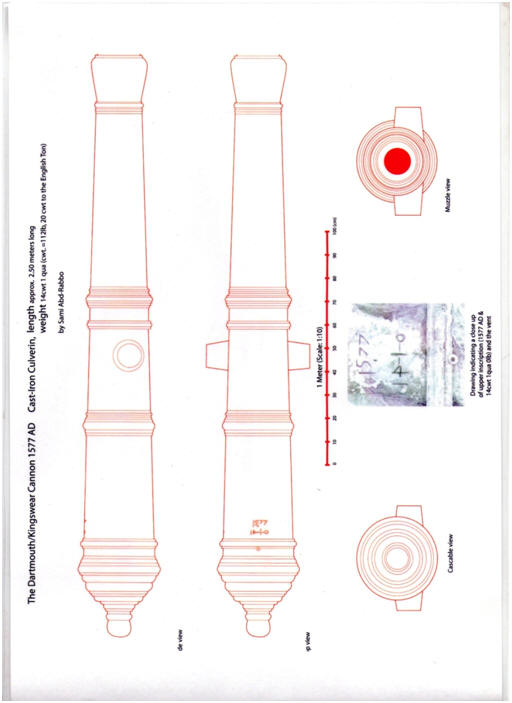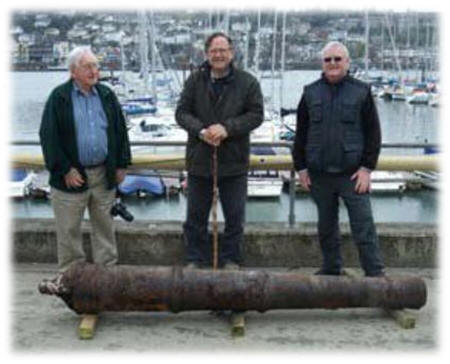Dartmouth Cannon site
N50 20.524 W3 33.632
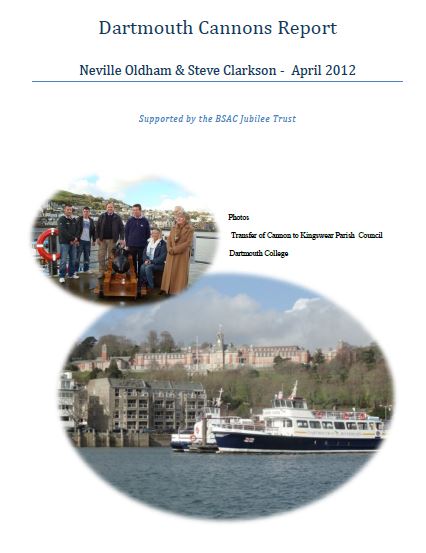
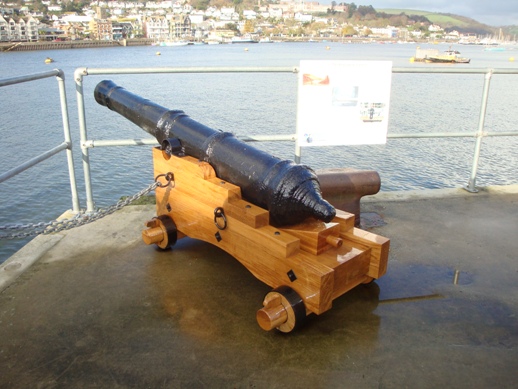
In the late sixties /early seventies, Neville Oldham and Tony Almer discovered seven cannons located on the sea bed in about 6 metres of water in the small bay at the mouth of the River Dart, below Kingswear Castle. The general opinion from local historians was that the cannon had been thrown from the Castle.
Over the years, the site was dived by a few divers and rumours abounded about a sword, pottery and onion-shaped glass bottles being found. Unfortunately, the only object I have been able to confirm is that of a sword which was in such a bad state that it could not be conserved.
In 1992, as part of a project of recording cannon sites in the sea along the South Devon coast, with the assistance of members of Totnes BSAC, we carried out a preliminary survey and located and recorded seven cannon. Unfortunately, we were unable to return and carry out any further work on the site due to pressure of work on other sites but have kept a watching eye on the site since.
A young local diver, Chris Reaves, who was very active in the area at the time, announced in the press that he was going to lift one of the cannons and present it to the town.
The cannon was raised in 1999 and put in a conservation tank at St Barnabas Church, Newcomen Road, Dartmouth, in a solution of caustic soda under the supervision of Mr. Bob Trevatt MBE, who was an antique furniture restorer and a conservation specialist. It was examined by an historian, who put its date around 1690AD
The cannon stayed in his Bob Trevatt’s care and Neville would visit it at least four times a year to monitor its condition, and occasionally also taking Lecturer, Dave Parham, and his students from Bournemouth University to look at it.
In the spring of 2005, when driving past St Barnabas Church, Neville observed that Midas Construction was proposing to convert the church into a school and flats. Neville approach the Site Agent and asked him when they proposed to start work on the project. He informed Neville that they would be starting the following Monday and if he wanted to save the cannon, he would have to move it before they started or it would be dumped. With the good offices of RGC Building Services and Chris Jay of Cornworthy, Neville was able to get the Cannon moved to Cornworthy and put it in a passive conservation tank.
While moving the cannon, we discovered the figures “1577” inscribed in the first field of the cannon, which we took to be possibly the correct date. Also, inscribed are the figures “14-1-0”, which stands for its weight, i.e. 14 cwt 1 quarter (28lb) zero lb. Colin Carpenter, the leading expert on ordnance, looked at the cannon and he has confirmed that it was Elizabethan and a very rare example. However, he advised that the cannon required more conservation and was very doubtful if it could be conserved satisfactory.
With the help of the local parish council, Kingswear Historical Society and Darthaven Marina, the cannon has been painted and mounted on a new gun carriage. Following a ceremony where all attended, it is now situated in the car park at Kingswear.
